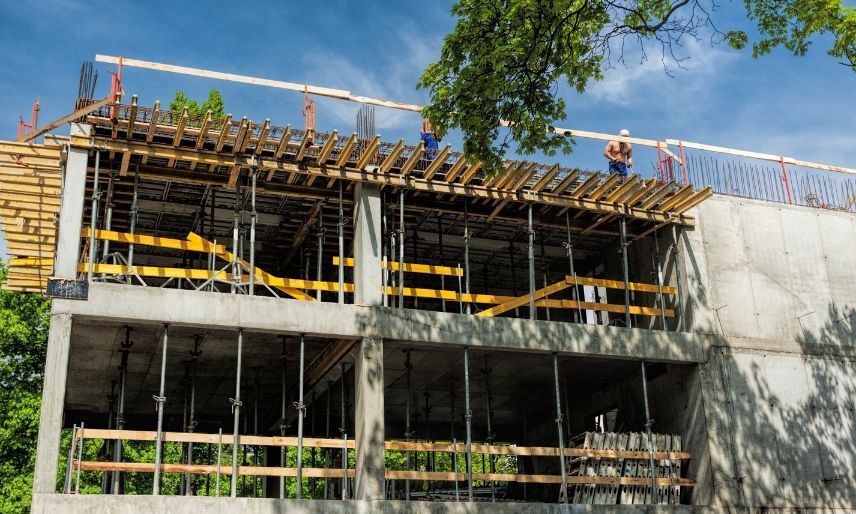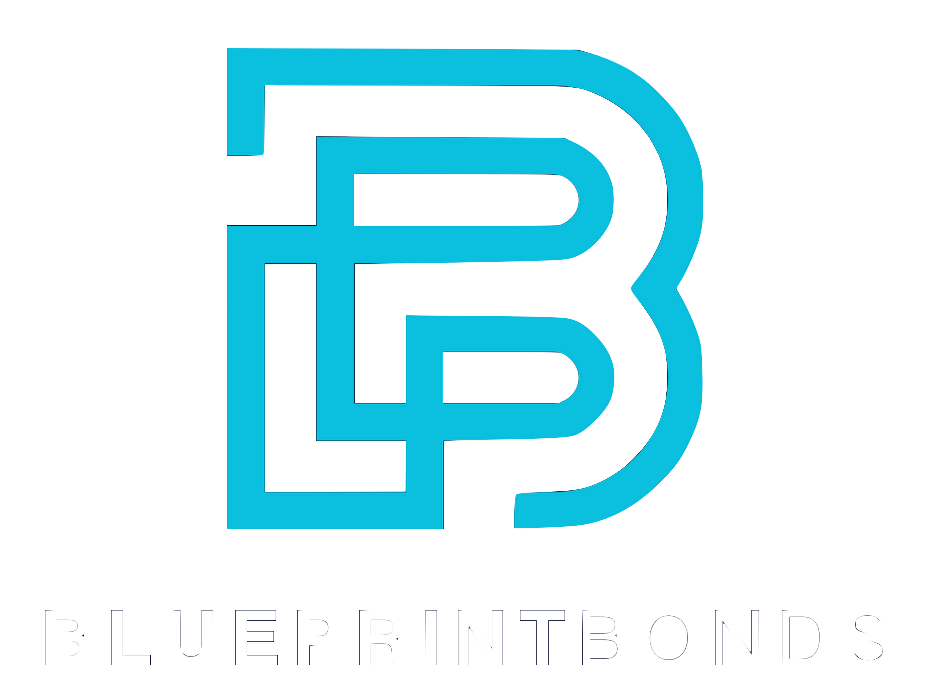Michigan’s public works sector is gaining momentum, driven by a mix of economic shifts, infrastructure investments, and regional growth. For contractors, investors, and policymakers, this surge signals both opportunity and complexity—especially when it comes to financing projects through bonding. Understanding the current landscape, including employment trends, wage dynamics, and transportation initiatives, is essential to navigating this evolving market.
One key factor accelerating Michigan’s public works activity is the state’s strategic use of bonding to fund transportation projects. The Michigan Department of Transportation (MDOT) has leveraged bonding as a tool to speed up construction timelines and unlock economic benefits sooner. This approach is reshaping how infrastructure projects are planned and executed statewide. For a closer look at MDOT’s bonding strategies, visit MDOT’s official bonding page.
Economic and Employment Trends Shaping Michigan’s Public Works
Michigan’s labor market provides important context for the public works sector’s growth. As of August 2025, the state’s unemployment rate stood at 5.3%, ranking as the fourth-highest in the nation. This figure highlights ongoing challenges in workforce availability that could influence project timelines and labor costs in public works initiatives. More details on Michigan’s unemployment rates can be found at Axios’s labor market report.
The Southwest Prosperity Region, a key economic hub in Michigan, employed nearly 300,000 people in 2023—about 6.8% of the state’s total workforce. This region’s occupational landscape is vital for public works projects, as it supplies much of the skilled labor and technical expertise required. However, the median hourly wage here was $21.52 in 2024, roughly a dollar less than the statewide median. This wage gap may impact recruitment and retention for contractors bidding on public projects. The Michigan Center for Data and Analytics offers an in-depth look at these employment figures in their labor market news.
Workforce Challenges and Opportunities
With a moderately high unemployment rate and wage disparities, contractors must carefully assess labor market conditions before committing to large-scale public works. The availability of skilled tradespeople, especially in construction and transportation sectors, can fluctuate. This reality underscores the importance of bonding as a financial safeguard, ensuring projects have the necessary backing even if workforce issues arise.
Moreover, the state has seen a growing emphasis on workforce development programs aimed at bridging the skills gap. Initiatives such as apprenticeships and vocational training partnerships with local community colleges are gaining traction, helping to cultivate a new generation of skilled workers. These programs not only address immediate labor shortages but also contribute to long-term economic stability by equipping individuals with the necessary skills to thrive in the evolving job market. As public works projects become increasingly complex, the demand for specialized training in areas like sustainable construction practices and advanced engineering techniques is likely to rise, further highlighting the need for investment in workforce education.
Additionally, the demographic shifts within Michigan's workforce present both challenges and opportunities. As older workers retire, there is a pressing need to attract younger talent to the public works sector. Engaging high school students through career fairs and internships can spark interest in these fields early on. Furthermore, promoting the benefits of careers in public works—such as job security, competitive wages, and the opportunity to contribute to community development—can help to enhance the appeal of these professions. By fostering a robust pipeline of talent, Michigan can better position itself to meet the demands of future public works projects while simultaneously addressing current workforce challenges.
Bonding: A Critical Tool for Accelerating Infrastructure Projects
Bonding has become a cornerstone of Michigan’s strategy to modernize its infrastructure efficiently. By issuing bonds, MDOT and other public agencies secure upfront capital to initiate projects without waiting for incremental budget allocations. This mechanism allows for simultaneous or sequential project launches, reducing overall completion time and delivering economic benefits earlier.
For contractors and subcontractors, bonding represents both a requirement and a protection. Performance bonds guarantee that projects meet contractual obligations, while payment bonds ensure subcontractors and suppliers receive due compensation. These bonds mitigate risks for all parties involved, fostering confidence in public works contracts.
How Bonding Influences Project Viability
The ability to secure bonding often determines whether a contractor can bid competitively on public projects. Bonding capacity reflects financial strength, experience, and risk management practices. In Michigan’s current market, where labor shortages and wage pressures persist, bonding reassures public agencies that contractors can handle unexpected challenges without compromising project delivery.
MDOT’s use of bonding to finance transportation projects exemplifies this dynamic. By advancing funds through bonds, the department accelerates road and bridge improvements that might otherwise be delayed. This approach not only benefits commuters and businesses but also stimulates local economies through job creation and increased demand for materials and services.
Moreover, the strategic implementation of bonding can lead to enhanced collaboration among various stakeholders, including government agencies, private contractors, and local communities. When projects are backed by robust bonding, it encourages contractors to engage in innovative practices and adopt new technologies, knowing they have the financial security to explore these avenues. This collaborative environment can result in more sustainable infrastructure solutions that not only meet current needs but also anticipate future demands, ensuring longevity and resilience in Michigan’s infrastructure.
Furthermore, the transparency that comes with bonding requirements fosters a culture of accountability. Public agencies can track project milestones and expenditures more effectively, ensuring that funds are utilized appropriately and efficiently. This level of oversight not only protects taxpayer investments but also builds public trust in government initiatives. As Michigan continues to navigate the complexities of infrastructure development, the role of bonding will remain pivotal in shaping a future-ready landscape that addresses both immediate and long-term challenges.
Public Transportation Growth and Its Impact on Public Works
Michigan’s public transportation industry is on an upward trajectory, with projections indicating steady growth through 2030. Though exact growth rates and revenue figures vary, the trend reflects increased investment in transit infrastructure, including buses, rail, and related facilities. This expansion creates new opportunities for public works contractors specializing in transportation projects. The growing emphasis on sustainable transportation options, such as electric buses and bike-sharing programs, further underscores the commitment to reducing carbon footprints while enhancing mobility for residents and visitors alike.
Grand Rapids, a prominent city in the Southwest Prosperity Region, illustrates this trend with ambitious infrastructure developments. The upcoming Acrisure Amphitheater, a 12,000-seat outdoor venue slated for completion by 2026, is part of a broader revitalization effort that includes transportation enhancements to accommodate increased visitor traffic. This venue is expected to host a variety of events, from concerts to community festivals, drawing significant crowds and necessitating improvements in public transit routes and parking facilities. Learn more about this project at Acrisure Amphitheater’s Wikipedia page.
Infrastructure Projects Supporting Economic Growth
Alongside new venues like the amphitheater, Michigan’s public works sector benefits from projects such as the Grand Rapids Downtown Market, which opened in 2013 and continues to serve as a community hub for commerce and culture. This market hosts over 20 tenants inside and more than 50 outdoor vendors, generating steady foot traffic and necessitating robust infrastructure support. The market not only promotes local agriculture and small businesses but also fosters a sense of community by offering cooking classes, workshops, and seasonal events that engage residents and visitors alike. Details about the market’s role in the local economy can be found here.
These developments highlight the interconnectedness of public works and economic vitality. Reliable transportation and well-maintained public spaces attract businesses and residents alike, fueling demand for further infrastructure investment. As cities like Grand Rapids continue to evolve, the integration of smart technology into public transportation systems will play a crucial role in enhancing efficiency and user experience. Innovations such as real-time tracking apps and automated fare collection systems are becoming increasingly common, ensuring that public transit remains a convenient and appealing option for commuters. Furthermore, the focus on accessibility for all citizens, including those with disabilities, is paramount in shaping a more inclusive urban environment.
Housing Market Trends and Their Influence on Public Works
Michigan’s housing market also plays a role in shaping public works priorities. As of August 2025, the median sale price for homes in the state reached $286,900, marking a 5.9% increase year-over-year. Rising home values often correlate with increased demand for infrastructure improvements such as roads, utilities, and public transit to support growing communities. This upward trend in housing prices not only reflects the desirability of certain neighborhoods but also indicates a shift in population dynamics, as more individuals and families seek to settle in areas with robust amenities and services.
Public works projects must adapt to these demographic and economic shifts, balancing maintenance of existing infrastructure with expansion to accommodate new neighborhoods and commercial areas. This balancing act requires careful financial planning and often relies on bonding to secure necessary funding without overburdening taxpayers. Furthermore, as communities evolve, public works must also consider environmental sustainability, integrating green spaces and energy-efficient systems into their planning to enhance resilience against climate change while meeting the needs of a growing population.
Planning for Sustainable Growth
Municipalities and regional planners face the challenge of aligning infrastructure investments with housing growth patterns. Well-timed public works projects can prevent bottlenecks and service disruptions, enhancing quality of life and property values. Bonding offers a flexible financing option that helps communities keep pace with development without sacrificing fiscal responsibility. Additionally, the integration of smart technology in public works, such as intelligent traffic systems and energy-efficient lighting, can further optimize infrastructure use, reducing costs and improving safety for residents.
Moreover, engaging the community in the planning process is crucial for successful public works initiatives. By soliciting feedback from residents and stakeholders, planners can better understand the specific needs and preferences of the population they serve. This participatory approach not only fosters a sense of ownership among community members but also leads to more effective and widely supported projects. As housing markets continue to evolve, the collaboration between local governments, developers, and residents will be essential in crafting infrastructure that not only meets current demands but is also adaptable for future growth.
What Contractors and Stakeholders Should Consider About Bonding
For contractors eyeing Michigan’s public works market, understanding bonding requirements and opportunities is crucial. Bonding not only enables participation in public projects but also protects against financial risks associated with delays, cost overruns, or labor shortages. The bonding process serves as a safeguard for project owners, ensuring that contractors fulfill their obligations and complete the work as promised. This assurance is particularly important in public works, where taxpayer money is at stake, and accountability is paramount.
Contractors should evaluate their bonding capacity regularly and work with surety providers to maintain or improve it. Demonstrating strong financial health and project management expertise can lead to higher bonding limits and more competitive bids. Additionally, contractors should be aware that bonding requirements can vary significantly based on the size and scope of the project. Larger projects may necessitate higher bonding amounts, which can be a barrier for smaller contractors unless they proactively manage their bonding relationships and financial standing.
Tips for Navigating Bonding in Michigan’s Public Works
- Build relationships with surety companies: Reliable partnerships can ease the bonding process and provide guidance on risk management. Establishing a rapport with surety agents can also lead to better understanding of the nuances of bonding requirements specific to Michigan’s public sector.
- Maintain clear financial records: Transparency and accuracy in financial reporting strengthen bonding applications. Contractors should invest in robust accounting systems that provide real-time insights into their financial health, which can be a significant advantage during the bonding process.
- Understand project-specific requirements: Different public works contracts may have unique bonding stipulations; review these carefully before bidding. This includes being aware of any local regulations or additional requirements that might not be standard across the state.
- Plan for workforce fluctuations: Anticipate labor market challenges that could impact project schedules and costs. Engaging with local labor unions and workforce development programs can help contractors secure a reliable labor pool, which is essential for meeting project timelines and maintaining bonding eligibility.
By taking these steps, contractors can position themselves to capitalize on Michigan’s growing public works opportunities while mitigating risks. Furthermore, staying informed about industry trends and legislative changes can provide contractors with a competitive edge. Networking with other professionals in the field, attending workshops, and participating in industry associations can also enhance a contractor's understanding of bonding and its implications for future projects. These proactive measures not only strengthen a contractor's bonding capacity but also contribute to their overall reputation in the public works sector.
Wrapping Things Up: The Road Ahead for Michigan’s Public Works and Bonding
Michigan’s public works market is heating up amid economic shifts, infrastructure investments, and regional growth. Bonding remains a vital tool for advancing projects efficiently and protecting stakeholders from financial uncertainties. As the state continues to invest in transportation, public spaces, and housing infrastructure, contractors and public agencies alike must navigate workforce challenges and wage dynamics thoughtfully.
Staying informed about labor market conditions, bonding strategies, and emerging projects will be key to success in this evolving landscape. For those involved in Michigan’s public works, bonding is not just a formality but a strategic asset that enables timely project completion and economic progress.
For more information on Michigan’s labor market and public works developments, visit the Michigan Center for Data and Analytics and stay updated on local economic trends.
Frequently Asked Questions
Q: Why is bonding important for public works projects in Michigan?
A: Bonding provides financial security, ensuring that contractors complete projects and pay subcontractors, which reduces risk for public agencies.
Q: How does Michigan use bonding to accelerate infrastructure projects?
A: The state issues bonds to secure upfront capital, allowing projects to start sooner and finish faster than relying on annual budget allocations.
Q: What challenges does Michigan’s labor market pose for public works?
A: With a 5.3% unemployment rate and wage disparities, contractors may face workforce shortages and higher labor costs.
Q: How does the housing market affect public works demand?
A: Rising home prices and growth increase the need for roads, utilities, and transit infrastructure to support expanding communities.
Q: What can contractors do to improve their bonding capacity?
A: Maintaining strong financial records, building surety relationships, and demonstrating project management expertise help increase bonding limits.
Q: Are public transportation projects growing in Michigan?
A: Yes. Public transportation is projected to grow steadily through 2030, creating more opportunities for infrastructure development.




